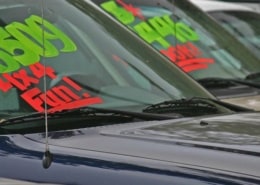How Do I Spot Odometer Fraud on a Used Car?
Protect your wallet by knowing how to detect odometer fraud in a used vehicle.
Have You Ever Wondered How to Spot Odometer Fraud?
Odometer fraud, also known as clocking, involves rolling back the odometer to make it seem like a car has fewer miles than it does. This deceptive practice can lead to you overpaying for a vehicle driven much more than you think, resulting in unexpected repairs and maintenance costs down the line. Knowing how to spot the signs of odometer fraud can save you from a bad deal and keep your hard-earned money safe.
We’ll cover everything from examining the vehicle’s history report to checking for inconsistencies in wear and tear. You’ll learn what to look for in the car’s documentation, how to recognize physical signs of tampering and the importance of professional inspections.
By the end of this article, you’ll be equipped with practical tips and expert advice to help you confidently assess the actual mileage of any used car you consider buying.
So, whether you’re a first-time buyer or a seasoned car enthusiast, read on to discover the essential strategies for spotting odometer fraud and ensuring you make an intelligent and informed purchase.
Table of Contents
Understanding Odometer Fraud
Before we discuss how to spot odometer fraud, let’s first understand what it is.
Odometer fraud, also known as “busting miles,” occurs when someone alters or manipulates a used car’s mileage to portray it as having fewer miles than it does.
What are the Consequences of Odometer Fraud?
The consequences of falling victim to odometer fraud can be severe. Not only could you end up paying more for a vehicle than it’s worth, but you could also face safety risks due to hidden wear and tear.
Furthermore, odometer fraud is illegal and punishable by law, so it is crucial to protect yourself from this fraudulent practice.
Signs of Odometer Fraud
Now that we’re well-versed in what odometer fraud entails let’s explore some common signs that may indicate a vehicle’s mileage has been tampered with.
Inconsistent Mileage
One of the first red flags to look out for is inconsistent mileage readings on the vehicle’s maintenance records or inspection stickers. If you notice a discrepancy in the mileage reported at different service appointments or inspections, it could be a sign that something is amiss.
Wear and Tear
Another telltale sign of odometer fraud is excessive wear and tear on the vehicle’s interior and exterior components. If a car appears to have significantly more wear than expected based on its mileage, it could indicate that the odometer has been tampered with.
Missing Service Records
Legitimate vehicles typically come with a complete set of service records documenting the maintenance and repairs performed on the car. If a seller cannot provide these records or if there are gaps in the vehicle’s maintenance history, it could be a sign that they are trying to hide something – such as odometer fraud.
Suspiciously Low Mileage
While a low mileage reading may seem reasonable, it could be a warning sign of odometer fraud. If a vehicle is significantly older than its reported mileage would suggest, it’s worth investigating further to ensure the odometer has not been rolled back.
Recommended Used Car Shopping Sites
 RydeShopper will find used car clearance prices in your local area. Their extensive dealer network will assist you in locating your next used car. To optimize your savings, choose all of the dealerships in your area.
RydeShopper will find used car clearance prices in your local area. Their extensive dealer network will assist you in locating your next used car. To optimize your savings, choose all of the dealerships in your area.
 Edmunds is one of the Internet's oldest used car research and reviews sites. You're sure to find a good deal on a used car among the hundreds of thousands of vehicles listed online.
Edmunds is one of the Internet's oldest used car research and reviews sites. You're sure to find a good deal on a used car among the hundreds of thousands of vehicles listed online.
 MotorTrend is a division of MotorTrend Magazine and one of the best-kept price quote secrets on the Internet. They have dealer relationships all over the country. Use their simple car price quote service to find your next used car.
MotorTrend is a division of MotorTrend Magazine and one of the best-kept price quote secrets on the Internet. They have dealer relationships all over the country. Use their simple car price quote service to find your next used car.
 CarsDirect has been in operation for over a decade. Their search tool makes finding the exact car you're looking for simple. Simple search and navigation will assist you in narrowing down your options to the ideal vehicle.
CarsDirect has been in operation for over a decade. Their search tool makes finding the exact car you're looking for simple. Simple search and navigation will assist you in narrowing down your options to the ideal vehicle.
How to Protect Yourself from Odometer Fraud
Now that you know how to spot odometer fraud, let’s explore some proactive steps you can take to protect yourself when buying a used car.
Conduct a Background Check
Before purchasing a vehicle, it’s essential to conduct a thorough background check to verify its history. AutoCheck can provide valuable information about the vehicle’s previous owners, reported accidents, and odometer readings.
Look for Signs of Tampering
Inspect the vehicle for signs of odometer tampering, such as loose screws on the dashboard, scratched or misaligned numbers on the odometer, or a mismatch between the mileage reading and the wear and tear on the vehicle.
Get a Pre-Purchase Inspection
Investing in a pre-purchase inspection by a trusted mechanic can help you uncover any hidden issues with the vehicle, including potential odometer fraud. A professional inspection can provide peace of mind before committing to a purchase.
Trust Your Instincts
If something doesn’t feel right about a vehicle or the seller’s behavior, trust your instincts and walk away. It’s always better to be safe than sorry when making a significant investment, like buying a car.
FAQs
Does high mileage always mean a car is in poor condition?
Not necessarily. High mileage can indicate a car has been extensively used, but if it has been well-maintained, it can still be in excellent condition. Service history and maintenance records are critical in evaluating the overall health of a high-mileage vehicle.
How much does mileage affect used car pricing?
Mileage significantly impacts used car pricing. Typically, higher mileage results in lower prices due to the increased likelihood of wear and tear. However, the extent of this impact varies based on the car’s make, model, and overall condition.
How can I determine if a high-mileage car is a good buy?
To determine if a high-mileage car is a good buy, consider its maintenance history, current condition, and recent repairs or replacements. Conducting a thorough inspection and possibly obtaining a professional evaluation can provide valuable insights.
What are the benefits of buying a low-mileage used car?
Low-mileage used cars generally experience less wear and tear, which can lead to lower maintenance costs and longer remaining lifespans. These vehicles are often perceived as more reliable and can command higher resale values.
Can I negotiate the price of a used car based on mileage?
Yes, you can negotiate the price based on mileage. High mileage can be a leverage point for buyers to negotiate a lower price, while low mileage can justify a higher asking price for sellers.
Is it better to buy a newer car with high mileage or an older car with low mileage?
It depends on individual preferences and the specific circumstances of the vehicles. Newer cars with high mileage may still have advanced features and technology, whereas older cars with low mileage might have less wear but could lack modern amenities.
Final Thoughts: How to Spot Odometer Fraud
Spotting odometer fraud can be challenging, but with the proper knowledge and awareness, you can protect yourself from this deceptive practice.
By following the tips and guidelines outlined in this article, you’ll be better prepared to make informed decisions about buying a used car and avoid potential pitfalls.
Remember, knowledge is power, so arm yourself with the information to spot odometer fraud and drive away confidently!














